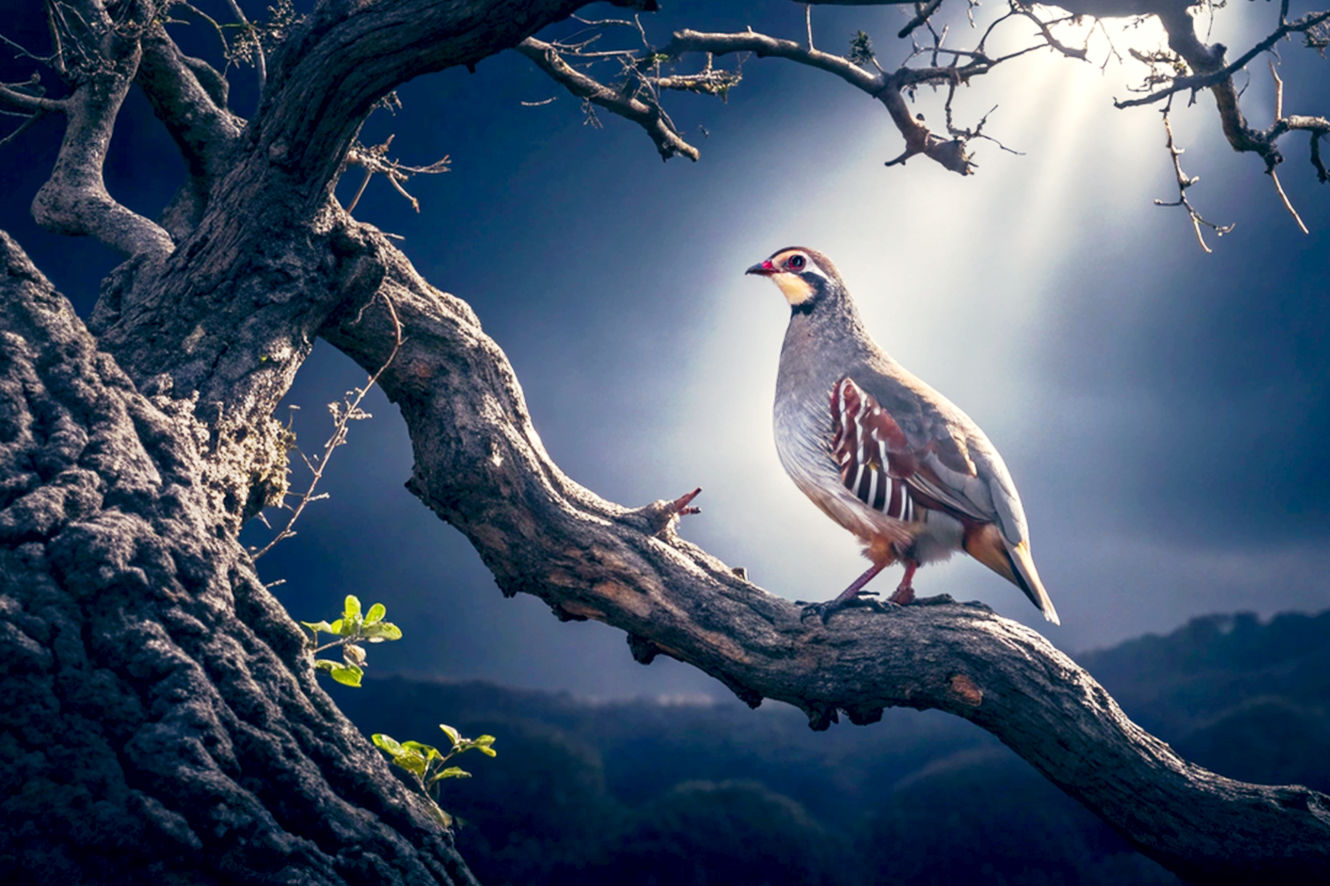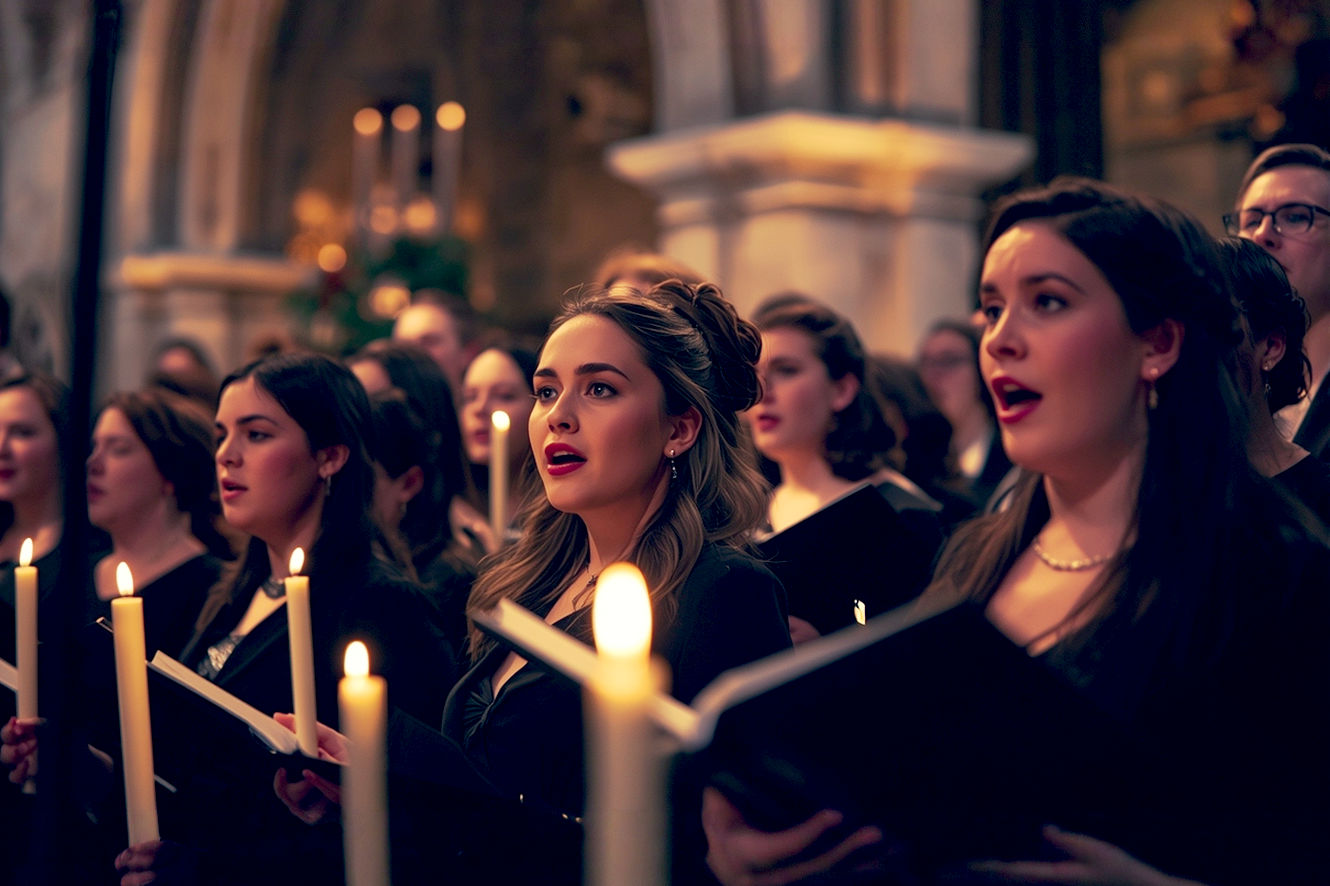This post may contain affiliate links. If you make a purchase through these links, we may earn a commission at no additional cost to you.
It’s a sound as essential to the holiday season as the crinkle of wrapping paper and the crackle of a winter fire. The moment those first cheerful notes ring out, they conjure images of snow-covered landscapes, rosy-cheeked carolers, and the magic of Christmas. But what if I told you that “Jingle Bells,” the undisputed king of secular Christmas carols, was never intended to be about Christmas at all?
The story of this beloved tune is far more complex, fascinating, and even controversial than its joyful melody suggests. It’s a tale that winds through the fast-paced world of 19th-century sleigh racing, the rowdy theaters of blackface minstrelsy, a bitter rivalry between two American cities, and the unlikely journey of a composer who was more of a rogue than a saint.
This is the definitive history of “The One Horse Open Sleigh”—the song you now know as “Jingle Bells”—and its transformation from a racy winter ditty into a global holiday anthem. Prepare to have everything you thought you knew about this iconic song turned upside down.
The Man Behind the Melody: Who Was James Lord Pierpont?
To understand “Jingle Bells,” you must first understand its creator, James Lord Pierpont. Born in Boston, Massachusetts, in 1822, Pierpont was a man who seemed to live a life as adventurous and unpredictable as his most famous song. He was not a cozy composer of yuletide cheer but a restless spirit, a wanderer, and an opportunist.
His family background was one of staunch New England respectability. His father, Reverend John Pierpont, was a prominent Boston abolitionist, poet, and Unitarian minister. His nephew would be the legendary financier J.P. Morgan. But James seemed determined to chart a different course. At just 14, he ran away from boarding school to join the crew of a whaling ship, the Shark, and spent the better part of a decade at sea.
By the late 1840s, Pierpont was back on land, trying his hand at various ventures during the California Gold Rush, including daguerreotype photography and business. He eventually returned east, and it was during this period, in the 1850s, that his path as a musician began to take shape. He served as the organist and music director for the Hollis Street Unitarian Church in Boston, where his father was the minister. Later, he moved south to Savannah, Georgia, to take a similar position at another Unitarian church, this time alongside his brother, John Pierpont Jr.
Pierpont’s life was marked by turbulence. He was widowed, remarried, and when the Civil War erupted, he made a decision that put him directly at odds with his abolitionist family in the North. He enlisted in the 1st Georgia Cavalry of the Confederate Army, writing songs for the cause, including “Our Battle Flag,” “Strike for the South,” and “We Conquer, or Die!” This starkly contrasts the wholesome image one might associate with the composer of “Jingle Bells.” His life was a tapestry of contradiction—a Northerner who fought for the South, a minister’s son with a penchant for adventure, and a composer whose most enduring legacy would be a song he likely considered a minor novelty.
“The One Horse Open Sleigh”: The Original Song
Before it was “Jingle Bells,” it was “The One Horse Open Sleigh.” Pierpont copyrighted the song on September 16, 1857, while living in Boston and working at the Hollis Street Church. The original 1857 sheet music, published by Oliver Ditson & Co. of Boston, bears this title. It wasn’t until an 1859 republication that the title was changed to the catchier “Jingle Bells, or The One Horse Open Sleigh.”
Listening to the original version is a slightly different experience. The melody in the chorus is not the smooth, flowing tune we sing today. It’s more staccato and classical-sounding, with a slightly different chord progression that feels less like a modern pop song and more like a parlor tune of its era. Furthermore, the original verse melody is more complex and less intuitive than the one that has become standardized over time.
More Than Just a Sleigh Ride: Analyzing the Original Lyrics
The most significant revelation for modern listeners comes from the song’s original lyrics. They don’t mention Christmas, holidays, or Saint Nick. Instead, they paint a vivid picture of a high-speed, boy-meets-girl sleigh ride that’s more about youthful hijinks and mild flirtation than festive cheer.
Let’s look at the original four verses, including the ones almost always omitted today:
(Verse 1) Dashing through the snow In a one-horse open sleigh O’er the fields we go Laughing all the way Bells on bob-tail ring Making spirits bright What fun it is to ride and sing A sleighing song tonight!
(Chorus) Jingle bells, jingle bells Jingle all the way Oh! what fun it is to ride In a one-horse open sleigh
This first verse is familiar. But the song continues, and the story gets more interesting.
(Verse 2) A day or two ago I thought I’d take a ride And soon Miss Fanny Bright Was seated by my side; The horse was lean and lank Misfortune seemed his lot He got into a drifted bank And then we got upsot.
Here, the narrative takes a turn. The sleigh crashes! The word “upsot” is a 19th-century colloquialism for “upset” or “overturned.” This verse introduces a character, Miss Fanny Bright, and an element of minor disaster, transforming the song from a simple description of a sleigh ride into a short story.
(Verse 3) A day or two ago, The story I must tell I went out on the snow And on my back I fell; A gent was riding by In a one-horse open sleigh, He laughed as there I sprawling lie, But quickly drove away.
This verse is rarely, if ever, sung today. The narrator is now alone and takes another spill, only to be laughed at by a passing stranger. It adds a layer of slapstick comedy to the song, a common theme in the popular entertainment of the 1850s.
(Verse 4) Now the ground is white Go it while you’re young, Take the girls tonight And sing this sleighing song; Just get a bob-tailed bay Two-forty as his speed Hitch him to an open sleigh And crack! you’ll take the lead.
The final verse is the most revealing. It’s a piece of direct advice to the young men listening: find some girls, get a fast horse, and go race. “Two-forty as his speed” refers to a horse that can run a mile in two minutes and forty seconds—a very respectable trotting speed for the era. The phrase “Go it while you’re young” frames the song as a call to youthful, slightly reckless fun.
Taken together, these lyrics suggest the song’s original context was not a family-friendly Christmas gathering but the world of sleigh racing. In the mid-19th century, particularly in New England towns with heavy snowfall, sleigh races were a popular, high-stakes, and often boisterous form of winter entertainment for young adults. They were a chance to show off your horse, impress a date, and engage in some spirited, alcohol-fueled competition. The song, therefore, was less “Silent Night” and more “The Fast and the Furious” on ice.
The Great “Jingle Bells” Debate: Medford vs. Savannah
Like any good legend, the story of “Jingle Bells” comes with a fierce and long-standing controversy over its birthplace. Two cities, Medford, Massachusetts, and Savannah, Georgia, both lay claim to being the site of the song’s creation.
The Case for Medford, Massachusetts
Medford’s claim is tied directly to the sleigh races that likely inspired the lyrics. A plaque in the Medford town square asserts that Pierpont composed the song at the Simpson Tavern in 1850 while watching sleigh races on Salem Street. The story goes that he was so inspired by the thrilling sight of the races that he wrote the tune right there.
The arguments in favor of Medford include:
- The Inspiration: Sleighing and sleigh races were a quintessential part of winter life in 19th-century Massachusetts. The imagery in the song—dashing through the snow, bob-tailed horses—fits the New England setting perfectly. Savannah, Georgia, is not known for its snowy winters.
- The Timeline: Proponents argue Pierpont wrote it in Medford in 1850 before moving to Savannah. The copyright date of 1857 in Boston is seen as the formal publication, not the date of composition.
- Local Tradition: The claim is a cherished piece of local history in Medford, passed down through generations.
The Case for Savannah, Georgia
Savannah’s claim is rooted in Pierpont’s documented residency there when the song gained popularity. A historical marker outside the Unitarian Universalist Church in Savannah proudly declares that James Lord Pierpont was the church’s organist and composed “Jingle Bells” while living in the city.
The arguments in favor of Savannah include:
- Pierpont’s Residency: Pierpont moved to Savannah in the mid-1850s to be the organist for the church, where his brother was the minister. He was undeniably living there around the time the song was copyrighted.
- A Thanksgiving Premiere: The Savannah theory posits that Pierpont wrote the song for a Thanksgiving service at the church. The story claims it was such a hit with the congregation that they asked him to perform it again for Christmas, thus beginning its association with the holiday season.
- Nostalgia for the North: Supporters of the Savannah theory argue that Pierpont, a transplanted Northerner, wrote the song out of homesickness and nostalgia for the snowy Massachusetts winters of his youth. This explains the snowy lyrics in a non-snowy location.
The Verdict: What Do Historians Believe?
While both cities hold passionate claims, most music historians and researchers, including Kyna Hamill, a lecturer at Boston University who has done extensive research on the song, lean toward a Massachusetts origin.
Hamill’s research points to the 1857 copyright filing in Boston as the most crucial piece of evidence. At that time, Pierpont was living and working in Boston’s West End, not Savannah. Furthermore, she argues there is no primary evidence that Pierpont wrote the song for a Thanksgiving or Christmas church service in Savannah. The story appears to be a local legend that grew over time.
The most probable scenario is that Pierpont composed “The One Horse Open Sleigh” in Boston (or nearby Medford) around 1857, drawing on his New England winter experiences. He copyrighted it there before his permanent move to the South. While he lived a significant portion of his life in Savannah, the song’s conception is most logically tied to the place that inspired its very subject matter: the snowy, sleigh-racing culture of 19th-century Massachusetts.
The Minstrelsy Connection: A Performance for its Time
Perhaps the most complex part of the song’s history is its connection to the most popular form of entertainment in 19th-century America: the blackface minstrel show. To understand the song’s debut, we have to step into a world with vastly different values and social norms. In 2017, researcher Kyna Hamill uncovered a playbill from Boston’s Ordway Hall dated September 15, 1857—the day before the song was copyrighted. It advertises a performance by “Ordway’s Aeolians,” a minstrel troupe, featuring “One Horse Open Sleigh” by performer Johnny Pell.
Understanding Minstrelsy in the 1850s
For audiences in the 1850s, a minstrel show was the equivalent of a blockbuster movie or a hit musical today. It was the primary form of mass entertainment, a structured show of songs, dances, and comedy. The performances involved white actors using burnt cork to darken their skin while portraying caricatures of African Americans, typically in Southern plantation settings.
From our modern viewpoint, this is seen as offensive. However, for the vast majority of the audience at the time, this was simply how entertainment worked. The characters on stage—often depicting Black people as simple-minded, perpetually cheerful, or comically trying to imitate white high society—reflected the deeply ingrained racial hierarchies of the era.
It’s crucial to understand that these portrayals served a powerful social and political purpose, especially in a nation fiercely debating slavery. Minstrelsy presented a comforting, non-threatening vision of Black life to white audiences. By showing enslaved people as happy and content, it created a narrative that countered the abolitionist movement and helped justify the institution of slavery. It was, in effect, a form of mass media that reinforced the era’s status quo, largely driven by elite interests to maintain the existing social order. The average audience member was likely not thinking in these political terms; they were simply enjoying a popular and funny show whose underlying assumptions went unquestioned in their society.
“Jingle Bells” as a Commercial Product
The fact that “Jingle Bells” debuted in this environment tells us something significant about its original purpose. James Lord Pierpont was a professional songwriter creating a product for the biggest market available to him. The song’s story—a sleigh ride that leads to a crash (“we got upsot”) and a bit of slapstick (falling on his back)—was perfect material for the comedic, narrative-driven songs that were staples of the minstrel stage.
It’s crucial, however, to separate the song’s enduring message from the context of its first performance. Unlike many songs of that era, the lyrics of “Jingle Bells” contain no racial caricatures or plantation themes. The story is simply about a thrilling, snowy sleigh ride—a universal experience of youthful fun.
This is precisely why the song was able to transcend its origins. Its message was so simple and joyful that it couldn’t be contained by the stage on which it debuted. This allowed it to be adopted, adapted, and eventually transformed into the global symbol of winter cheer we know today. Understanding this history doesn’t tarnish the song; it reveals the remarkable power of a simple, happy tune to rise above the complexities of its time and find a permanent place in our hearts.
The Transformation into a Christmas Classic
So, how did a racy, secular sleighing song that premiered in a minstrel show become the world’s most famous Christmas carol? The transformation was gradual, accidental, and driven by a combination of cultural shifts and commercial convenience.
The journey began in the late 19th and early 20th centuries. The song’s catchy melody and winter-themed, though not explicitly Christmas-themed, lyrics made it a popular choice for school holiday concerts and community singalongs. The more risqué verses (like the one about picking up girls) were gradually dropped, and the lyrics were simplified, leaving only the G-rated first verse and chorus that we know today.
Key Milestones in its Holiday Ascension
Several key moments helped cement “Jingle Bells” as a Christmas standard:
- Edison’s Phonograph (1889): One of the earliest recordings ever made for commercial release on Thomas Edison’s new phonograph was of “Jingle Bells.” This early exposure through new technology helped spread its popularity.
- The Rise of Radio (1920s-1940s): As radio became the dominant form of home entertainment, “Jingle Bells” was a frequent feature on holiday broadcasts. Its upbeat, non-religious nature made it a perfect choice for reaching a broad audience.
- Bing Crosby and The Andrews Sisters (1943): This star-powered recording became a massive hit, selling over a million copies. Their smooth, swinging rendition helped define the modern sound and feel of “Jingle Bells,” solidifying its place in the American Christmas songbook.
- Post-War Commercialization: In the post-World War II economic boom, the commercialization of Christmas exploded. Advertisers, retailers, and television specials needed a soundtrack for the season, and the cheerful, secular energy of “Jingle Bells” was a perfect fit.
By the mid-20th century, the song’s original identity was all but forgotten. It had been fully absorbed into the cultural fabric of Christmas, its sleigh bells becoming synonymous with Santa’s sleigh.
Jingle All the Way… to Outer Space
The cultural reach of “Jingle Bells” is so immense that it even extends beyond the Earth’s atmosphere. In a moment that blended history, technology, and a bit of holiday humor, “Jingle Bells” became the first song ever broadcast from space.
On December 16, 1965, the astronauts of Gemini 6A, Tom Stafford and Wally Schirra, were nearing the end of their mission, which had included the first-ever rendezvous between two crewed spacecraft with Gemini 7. As they prepared for re-entry, they sent a strange report to Mission Control.
“We have an object, looks like a satellite going from north to south, probably in polar orbit,” Schirra reported with a serious tone. “He’s going to be passing over in a minute… I see a command module and eight smaller modules in front. The pilot of the command module is wearing a red suit.”
As controllers in Houston began to process the startling report of a UFO, the sounds of a smuggled-in harmonica and a set of tiny sleigh bells filled the airwaves. Schirra and Stafford played a cheerful, if slightly clumsy, rendition of “Jingle Bells.”
This cosmic Christmas prank was a moment of levity and humanity that captured the world’s imagination. The harmonica and bells, the first musical instruments ever played in space, are now on display at the Smithsonian National Air and Space Museum. It’s a fittingly adventurous chapter for a song written by a man who once ran away to sea.
The Enduring Legacy of a Sleighing Song
Today, “Jingle Bells” is a global phenomenon. It has been recorded by thousands of artists in virtually every genre imaginable, from classical and country to rock and roll and reggae. It is sung by children in school pageants and blasted in shopping malls from Tokyo to Toronto. Its simple melody is instantly recognizable to people who may not even celebrate Christmas.
The song’s journey is a microcosm of American cultural evolution. It reflects:
- The changing nature of entertainment: From live minstrel shows to phonograph records, radio broadcasts, and now streaming services.
- The sanitization of popular culture: The dropping of controversial verses to make the song more family-friendly.
- The power of nostalgia: How a song about a specific 19th-century activity became a timeless symbol of a feeling—the joy and wonder of the winter season.
- The complexity of history: The uncomfortable reality that beloved traditions can have origins rooted in problematic practices like minstrelsy.
James Lord Pierpont died in 1893 and is buried in Laurel Grove Cemetery in Savannah. He never saw his little sleighing song become a worldwide sensation and certainly never profited from its immense success. It’s unlikely he ever imagined that the tune he wrote for a rowdy Boston stage would one day be performed in the silent vacuum of space.
So, the next time you hear those familiar bells jingle, take a moment to appreciate the rich, complex, and surprising story behind the music. It’s a song not of holy nights, but of fast horses and snowy fields. It’s a story of a restless composer, a tale of two cities, and a journey through the best and worst of American history. It’s the story of how a simple, jaunty tune about a one-horse open sleigh dashed its way into the heart of the holiday season and never left.






